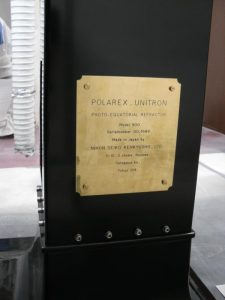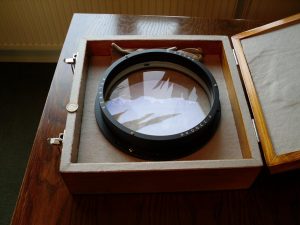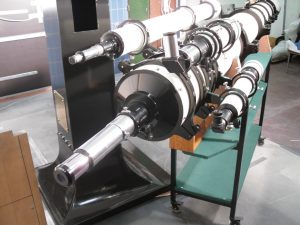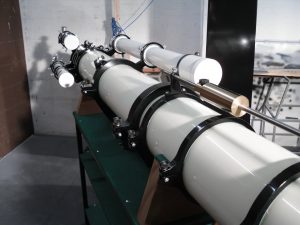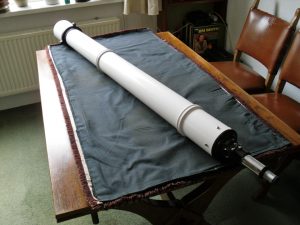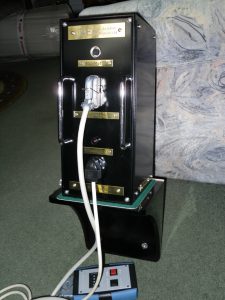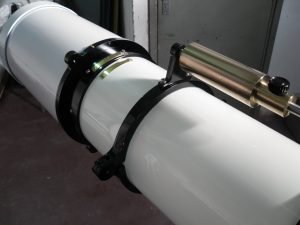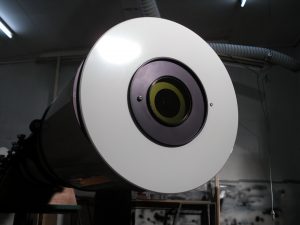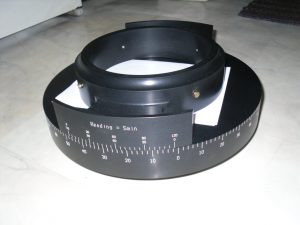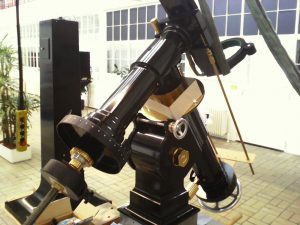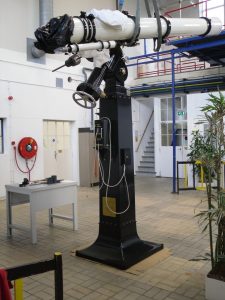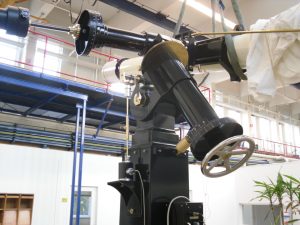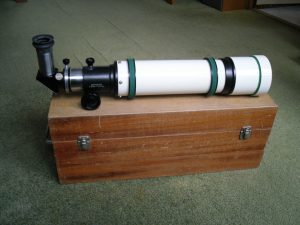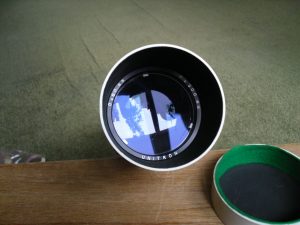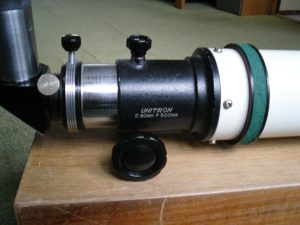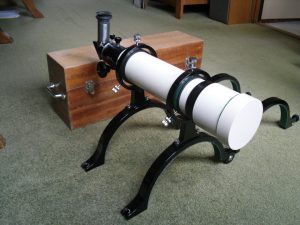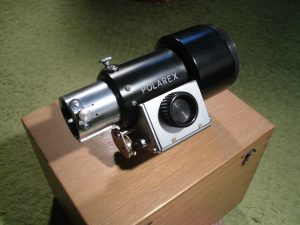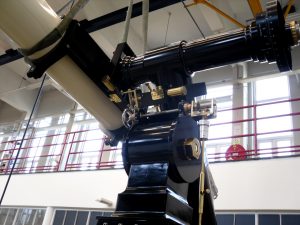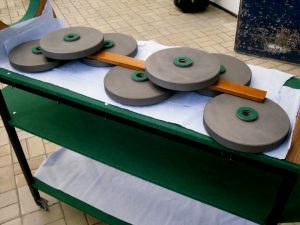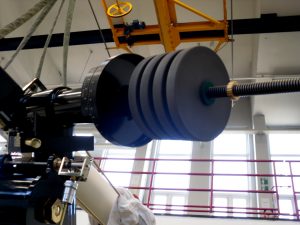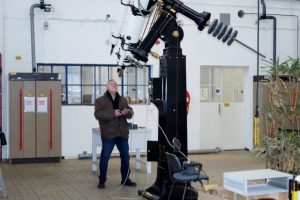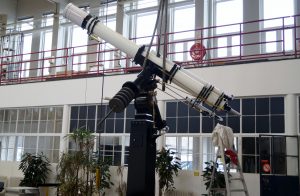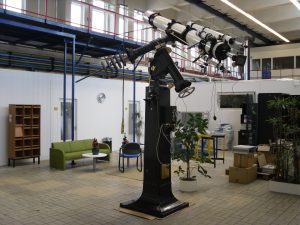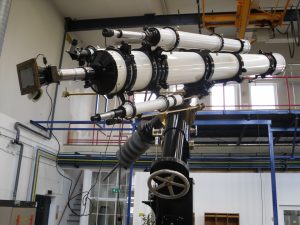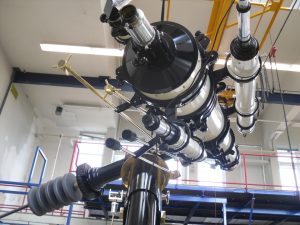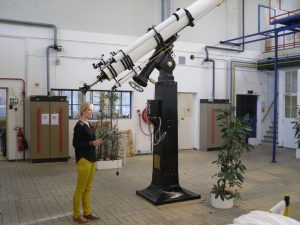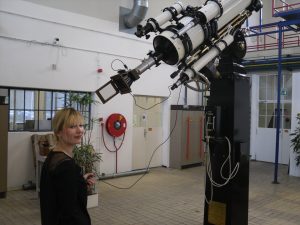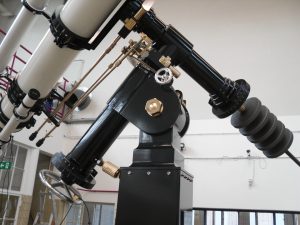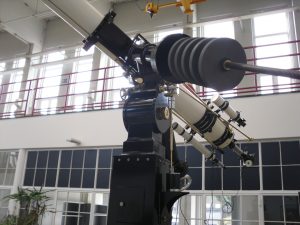This feature discusses the discovery, recovery, and restoration of a one of a kind Polarex-Unitron Model 900 that is located at Delft University of Technology, Delft, Netherlands. To the best of my knowledge this is the largest refractor manufactured by Nihon Seiko…and the only one of its kind. It is a 225mm diameter, 3300mm focal length pedestal mounted photo equatorial weighing about 1200 lbs. Unless noted, all photos courtesy of the owner Alex Boot. Alex is a Professor of Chemistry at UT Delft and is also the owner of 2.4″, 3″, and 4″ Polarex Equatorial refractors.
According to Alex, “as I can remember, it was 2009. One of my Japanese students helped me set up my 4 inch pier model here outside for a look at a part of a solar eclipse. He told me his father worked at Nihon Seiko and told me there still was some equipment stored there that looked a lot as my 4 inch. I got the phone-number of his father, still working there, but not very willing to take a look in their basement storage. “If I was interested, I had to come to see for myself.”
Nothing to lose, I made the trip but expected nothing. Nevertheless I was kindly invited there to look around. The storage looked very desolated and forgotten, and was “subject to be demolished that same year”. Nobody was sure what really was stored there. On top of a large shelf, covered with a dusty blanket, I found this beauty, with lens apart in a wooden box and clamps in a carton box, all paint was chipped. But underneath I saw the unmistakable Unitron/Polarex quality. I spend 2 weeks there to make wooden boxes out of junk material and stayed at the site-managers home on the same spot. Six months after my treasure-finding, this storage area was torn down and all in-house materials scrapped. Can you imagine this scope on a metal junk-yard?
It stayed here for some years in storage until I found a very suitable place to start repainting, polishing and fitting all parts together. Now it’s getting near the end of it and it’s time to find a good place for “its first light”, possibly Spain.”
The telescope is equipped with a 4 inch guidescope, and two viewfinders, a 60mm x 700mm and an 80mm x 500mm. “Also included is the Super Unihex, an electrical drive with friction-coupling and hand-controller adjustable for various speeds forward and backward. I also found a 60mm astrograph, not meant for this scope but too nice to leave it there and I will fit it anyway, a “Duetron”, a micrometer-eyepiece, some very different eyepieces such as a wide-angle 32mm, and of course the huge 60mm.”
Some photos of the early restoral and assembly at Delft University of Technology:
Some of the more interesting accessories included an 80mm x 500mm Viewfinder and an electric focuser:
Super Unihex and several eyepieces including the 60mm and a 32mm: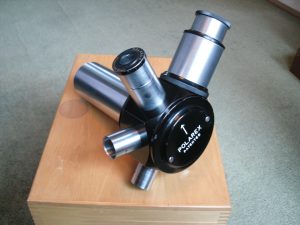
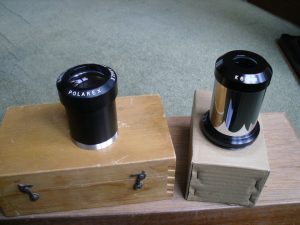
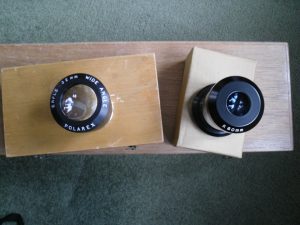
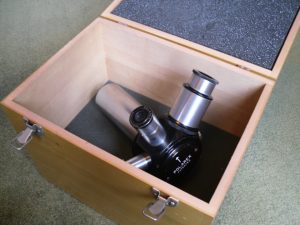
Alex provided these photos and information as he continued his restoration. “The original counter-weights are made of cast-iron. When I found them they were laying in a rather moist hall for nearly 30 years, so the surface was covered with small corrosion-pits. I could do it the easy way, sand-paper them and paint them; that will hold for some time but not for long until corrosion will be back. I decided to make the best of it, and took them to a nearby company where they were sand-blasted, de-greased and three layers of a rough coating (giving enough “grip” not to let them slip out of my hands…) was applied. It took some time but I’m happy with the result as you will see. Picture “weights1” shows more brass-polishing and positioning the mount for fixing the weights. Picture “weights2” shows the seven original cast-iron weights, diameter 12 inch with a centre hole for trapezium-thread 40mm. Each weight is approx. 22 kg. Picture “weights3” shows four discs mounted to balance the scope, but more will be used after the three guide scopes are mounted. The trapezium thread works very well to find a quick balance. Picture “weights4” shows nice detail of the “finger-protection”; as the centre of the weights is some higher, one’s fingers never can get hurt during rotating the discs.”
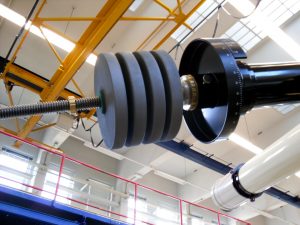 Some photos courtesy of John Baars of the completed Model 900 depicting the enormous size and incredible beauty of this scope.
Some photos courtesy of John Baars of the completed Model 900 depicting the enormous size and incredible beauty of this scope.
These are the photos of the completed setup of the Model 900 provided by Alex in April 2018. Future plans include a move to a permanent home and a “First Light”. Alex expects the scope to be transported to its new home in April and ready for viewing the Mars opposition.
Updated April 11, 2018

